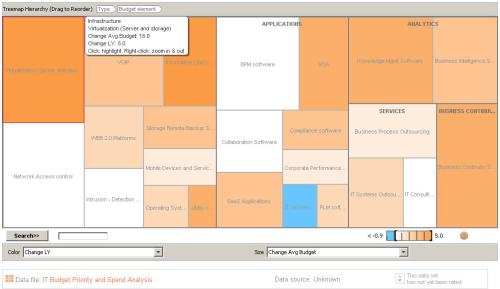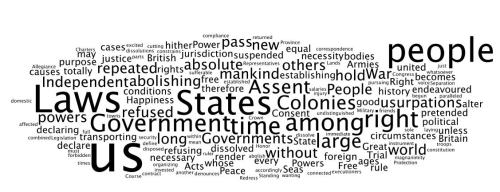We all hear about strategy and business alignment. A lot of books have been written by a lot of very smart people about this topic. I’m going to write about a professional journey to explore how to translate strategy into something tangible I can use to explore and measure progress to plan once execution begins using analytics and a little common sense to guide my efforts.
This is a journey to address an important and urgent business problem; how to select the most effective sales method, quantify the results, and ensure this effort is aligned with the business.
Why Sales?
This is subject that is very near and dear to a lot of business leaders today with the significant shift occurring across industries in the way customers decide what to buy and who they will buy from. This is further compounded by the uncertainty created in the business and political climate where cost-cutting and running for cover has become the standard response to sales offers no matter how elegantly and well executed (and sometimes heavily discounted). And, unless you are from another universe (or the government <g>), sales is the engine that fuels everything the business relies on to remain an on-going viable entity.
 The challenge for most: Sales are slipping, margins are impacted, sales cycles are expanding, growth slowing, and we no longer have the close relationships we could leverage with our best customers in tough times.
The challenge for most: Sales are slipping, margins are impacted, sales cycles are expanding, growth slowing, and we no longer have the close relationships we could leverage with our best customers in tough times.
Why is this happening?
Typically 85% of a customer’s budget will be allocated to existing commitments leaving approximately 15% for discretionary spending. We are all finding out how much harder it can become as that 15% disappears in an across-the-board cost cutting frenzy. And now making matters worse, our customer relationships have lost much of their power and leverage. With a lot less money to go around, proposals are subjected to higher and higher levels of review with our buyers. In many cases the managers we have traditionally done business with are no longer the decision makers or have been laid-off as part of the cost-cutting underway.
 We all know this. What many may not know is Empirimetric’s analysis during the last recession of 3,000 business units from more than 300 corporations found that operating effectiveness contributes to a company’s financial performance just slightly more than pure dumb luck and random events. In fact if memory serves me the study revealed that profitability is directly and indirectly influenced by:
We all know this. What many may not know is Empirimetric’s analysis during the last recession of 3,000 business units from more than 300 corporations found that operating effectiveness contributes to a company’s financial performance just slightly more than pure dumb luck and random events. In fact if memory serves me the study revealed that profitability is directly and indirectly influenced by:
– Strategic moves initiated by the business: 10%
– Luck and random events: 10%
– Operating Expense Reductions: 15%
– Market Awareness, Competitive position, Customer Intimacy: 65%
So, now we have the problem or business challenge framed up and ready to explore. Applying the essential analytics to solve for this complex issue will clearly not be easy. But what can we do, after the operating expense reductions have been exhausted? Rely on luck and random events? Hope for the 10% improvement in a strategy initiated by the business will be realized? Or go where the money is and attack the real opportunity. And this is why we are starting with the sales model – this is where customer intimacy, competitive position, and market awareness are realized.
What is a technologist doing dabbling in sales?
This illustrates a key concept I believe in. In order to deliver an effective solution you really do need to understand the subject matter to add real value. Value in this case is helping our peers in the business understand (through our help) the true impact of what adopting a new strategy means. In order to truly understand this subject we ask our peers (management) and the people in the field to help us understand:
– competitors better than they may even understand themselves
– position and branding in the market (market share)
– what processes are perceived as value-added from your customers
– what revenue streams are truly profitable and which are not
Now it gets a whole lot more interesting. And tougher to achieve and measure progress to plan. Remember we need to consider the impact to the business essentials (cash flow, profitability, velocity, growth, and customer intimacy). In Customer Relationship Management we have four generally accepted meta-processes families which we can agree on to include:
– Target to Engage (Marketing)
– Engage to Close (Sales)
– Install to Maintain (Service)
– Request to Resolve (Customer Support)
Examining the Engage to Close (Sales) process further we cam examine the underlying model used. Simplified for our purposes lets just look at two alternative models; solution and provocation (some refer to this as prescriptive). For more on the provocation model see HBR March 2009 -In a Downturn, Provoke Your Customers written by Philip Lay, Todd Hewlin, and Geoffrey Moore. They have decomposed the engage to close into three distinct activities to include:
– Qualify lead
– Make Your case
– Close the deal
So, now we have the problem or business challenge framed up and ready to explore. Applying the essential analytics to solve for this complex issue will clearly not be easy. But truly rewarding because it does address the engine that fuels everything the business relies on to remain an on-going viable entity. And just maybe the analytics will uncover some fresh insight into how to not only survive, but thrive in this new environment.









 Not sure I can even begin to answer questions like this without a good clean source of reliable data I can use in a business intelligence application. Of course, I can always guess or do what many of my potential customers will do – go with their gut feel (many of them are usually right, much like the broken watch that is correct twice a day <g>).
Not sure I can even begin to answer questions like this without a good clean source of reliable data I can use in a business intelligence application. Of course, I can always guess or do what many of my potential customers will do – go with their gut feel (many of them are usually right, much like the broken watch that is correct twice a day <g>).